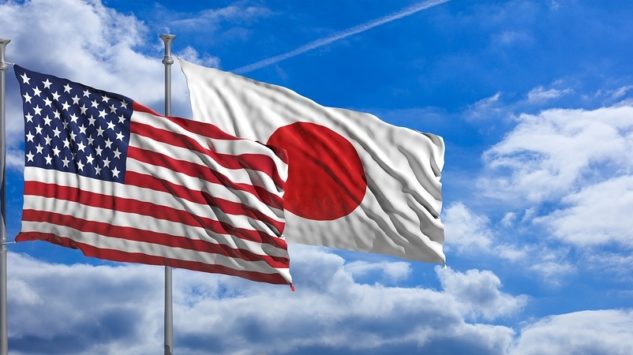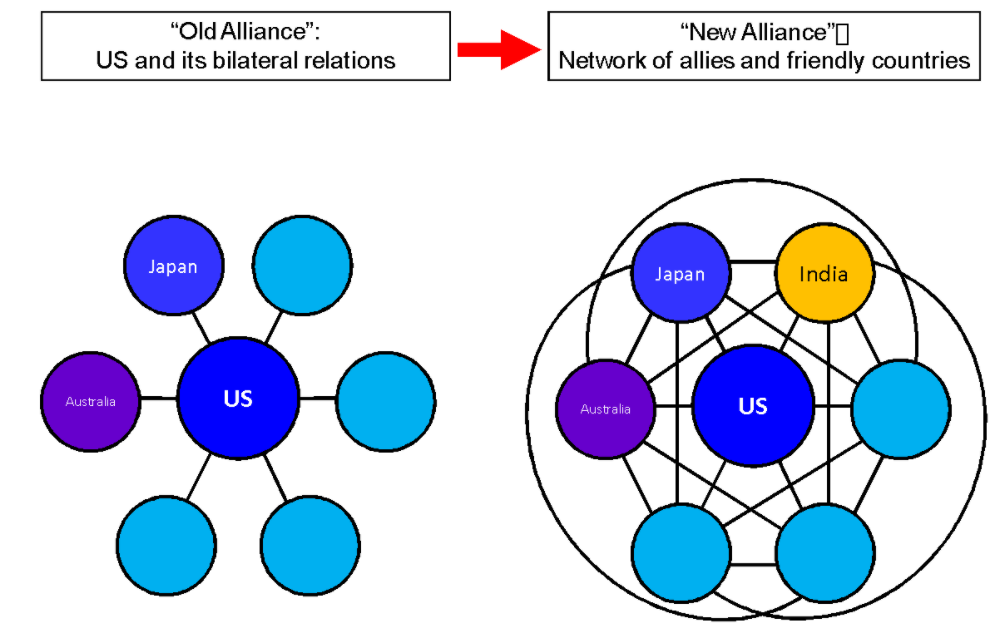The views and opinions expressed in this issue brief are those of the authors and do not necessarily reflect the official policy of GPI.
Issue Briefs

The Importance of Japan’s Security Role Under Trump
Dr. Satoru Nagao
Associate, Society of Security and Diplomatic Policy Studies
Lecturer, Gakusyuin University
On January 12-17 2017, Japan’s Prime Minister Shinzo Abe visited the Philippines, Australia, Indonesia, and Vietnam. To bolster regional defense and security, he emphasized that change to the status quo cannot be accepted if it is advanced by force or coercion. He underscored the importance of rule-based approaches. Simultaneously, he insisted upon a “Free and Open Indo-Pacific Strategy.” These were the main themes of this visit.
In fact, this visit was not related directly with the result of US president election in November 2016. However, the visit was more important after Donald Trump won the election. During the election campaign, he demanded that US allies share a heavier burden of security. Japan must show how much of a burden Japan has shouldered as a US ally. In this respect, PM Abe’s recent visit presented a fixed response.
Consequently, this article will present analyses of the recent security situation and suggest roles that Japan should undertake as a fixed option using examples of PM Abe’s visit.
1. Changing US-China military balance and declining US influence
A salient feature of the recent security situation is changing US-China military balance. For example, during 2000-2015, the US commissioned 13 new submarines. During the same period, China commissioned at least 42 submarines. Consequently, in the Indo-Pacific, China can now deploy more submarines than the US. Although US submarines are more sophisticated than Chinese boats, and although it is expected that the US would prevail if war should break out, it is also true that US military influence has been declining gradually.
In addition, from the second term of Barack Obama administration to the new Trump administration, the relative influence of US military power has continued to decline. Despite US failure to deter Russian actions in the Crimea, Ukraine, and Syria, it is expected that the US new government will seek cooperation with Russia. From the perspective of countries such as Ukraine and Moldova, which rely on the US, the US will abandon them. For that reason, Moldova is seeking negotiations with Russia.
As a result of this US foreign policy, US allies and friendly countries in the Indo-Pacific also view the future with anxiety. The US has not dissuaded China from building artificial islands in the South China Sea. US allies and friendly countries including the Philippines and Vietnam are concerned about the possibility that the US will strike some deal with China and abandon their interests. China has already recognized the concerns of these countries. Consequently, China has shown friendly gestures to these US allies and friendly countries, cajoling them with promulgation of “China’s policy of Asia-Pacific Security Cooperation.”
Although US President Trump promises to increase the number of warships and fighter jets to “make America great again,” US influence as a security provider has been declining. US allies and friendly countries require a new security framework now to adjust to the climate of declining US influence.
2. Emergence of a new security framework
Since the Obama administration, a new security framework has emerged. For a long time, bilateral alliances led by the US, such as those of Japan-US, US-Australia, US-Philippines, and US – South Korea have maintained order in the Indo-Pacific as an “old” security framework resembling a “Hub and Spoke system.” In the system, a deep defense relation is lacking among the allies. For example, both Japan and Australia are US allies, but they share no close security relations. Under this system, US allies and friendly countries are heavily dependent on US military power. US influence is declining. Therefore, the reliability of the entire security framework is declining.
Consequently, a new security framework has emerged. This framework is a security network of numerous bilateral, trilateral, quadrilateral, other multilateral cooperative relationships among US allies and friendly countries. This cooperation includes not only US-led cooperation such as Japan-US-Australia, Japan-US-India, and Japan-US-Australia-India, but also Japan-Australia-India and Australia-India-Indonesia, which do not include the US (Fig.).

Figure: “Old” and “New” security frameworks
Source: Satoru Nagao, “The Japan-India-Australia “Alliance” as Key Agreement in the Indo-Pacific”, ISPSW Publication September 2015, Issue No. 375, (Berlin, The Institute for Strategic, Political, Security and Economic Consultancy (ISPSW)) http://www.isn.ethz.ch/Digital-Library/Publications/Detail/?en&id=193713 (accessed September 23 2015)
This new security framework presents several strong points of marked benefit. First, because this system is not heavily dependent on US influence, the adverse impact of declining US influence will be minimal. Secondly, because this system includes India and Southeast Asian countries that have rising influence, the security framework can maintain sufficient power for a long time. Furthermore, a multilateral system demands that countries adopt a rule-based approach. For that reason, if China and Russia act responsibly under the agreed set of rules, they might be allowed to join. Therefore, the new security framework offers the important possibility of reducing tensions in this region.
3. Japan’s role
What role does Japan have under the new security framework? First, it is important for Japan to enhance security cooperation with other US allies and friendly countries. Australia and India are the most important candidates today. Australia has a long record as a US ally. India has committed to extensive military modernization. Therefore, a beckoning opportunity is that India will be an important leading country in maintaining a future security framework. Japan should cooperate actively with these countries by sharing information, holding joint exercises, and by developing and producing defense equipment jointly. During PM Abe”s visit in January, Japan and Australia signed a new Acquisition and Cross-Servicing Agreement, which will facilitate mutual logistical support including materials and ammunition for joint exercises, UNPKO, etc. To follow up on that success, Japan should conclude similar agreements with India.
A second important role for Japan is building the capacities of defense forces in Southeast Asia. Southeast Asian countries lack sufficient defense forces. Therefore, this “power vacuum” has persisted as an important reason for China to exhibit their assertiveness in the South China Sea. For instance, when a Malaysian airplane was lost in 2014, coastal countries were unaware of the plane”s whereabouts because they had insufficient radar systems to detect it. To resolve that situation, they needed radar and sensor systems to be aware of events there and to address such situations by dispatching planes and ships. During PM Abe”s visit to Vietnam in January, Japan decided to donate six new built patrol vessels. Donating and exporting equipment are effective methods to promote long-term relations because the recipients need training and maintenance of suppliers.
From the second term of the Obama administration and into the new Trump administration, US influence has been declining. The possibility exists that the Trump administration needs more time to re-establish a security policy and show its influence effectively. During the time, Japan”s role has vital importance. Japan should allay the concerns of US-supported Asian countries. PM Abe understands this situation exactly. Therefore, his visit in January was extremely successful. Japan should enhance its efforts in this direction.
First published in Society of Security and Diplomatic Policy Studies
http://ssdpaki.la.coocan.jp/en/topics/2.html (Project of the Kajima Institute of International Peace)
|
|